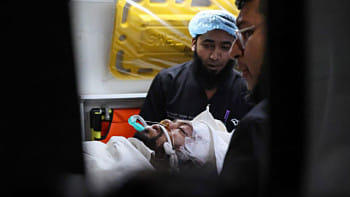Antimicrobial resistance: What's the big deal?

A recent study from China reported an alarming finding: a gene that confers resistance to certain antibiotics (used against dangerous bacteria) is found in a growing number of bacteria from meat samples in China and from some hospital patients.
In a report released by the World Health Organisation (WHO), it was shown how confused the general population is about the topic of antibiotic resistance. Surveys administered in a number of countries revealed the following:
- Three quarters of respondents think antibiotic resistance happens when the body (not bacteria) becomes resistant to antibiotics.
- Two thirds believe individuals are not at risk for a drug-resistant infection if they personally take their antibiotics as prescribed.
- Nearly half of the respondents think antibiotic resistance is only a problem for people who take antibiotics regularly.
- Nearly two thirds (64%) believe the medical community will solve the problem before it becomes a serious threat.
- Nearly two thirds of respondents believe antibiotics can be used to treat viruses, and one third (32%) believe they can stop taking antibiotics when they feel better.
These findings are worrisome, especially that we are in the age of booming of information and easy accessibility to it. Coming to realise the extent of misconception about antimicrobial resistance requires immediate action by healthcare professionals.
So, what exactly is antibiotic resistance? According to the Center for Disease Control and prevention (CDC), "antibiotic/antimicrobial resistance is the ability of microbes to resist the effects of drugs - that is, the germs are not killed, and their growth is not stopped."
Bacteria will inevitably find ways of resisting the antibiotics developed by humans - this is their evolutionary mechanism to protect themselves. No one can completely avoid the risk of antibiotic-resistant infections.
The use and misuse of antimicrobial drugs accelerates the emergence of drug-resistant strains. Poor infection control practices, inadequate sanitary conditions and inappropriate food-handling encourage the spread of antimicrobial resistance. The use of antibiotics is by far the single most important factor leading to antibiotic resistance around the world.
Trends in drug resistance
- Antibiotics are among the most commonly prescribed drugs used in human medicine and can be lifesaving drugs. However, up to 50% of the time antibiotics are not optimally prescribed, often done so when not needed, incorrect dosing or duration.
- Another major factor in the growth of antibiotic resistance is spread of the resistant strains of bacteria from person to person, or from the non-human sources in the environment.
Need for concerted action
Antimicrobial resistance is a complex problem. Coordinated action is required to minimise emergence and spread of antimicrobial resistance.
People can help tackle resistance by:
- Hand washing, avoiding close contact with sick people to prevent transmission of bacterial infections and viral infections; and using condoms to prevent the transmission of sexually-transmitted infections
- Getting vaccinated and keeping vaccinations up to date
- Using antimicrobial drugs only when they are prescribed by a certified health professional
- Completing the full treatment course, even if they feel better
- Never sharing antimicrobial drugs with others
Health workers and pharmacists/drug dispensers can help tackle resistance by:
- Enhancing infection prevention and control in hospitals and clinics
- Only prescribing and dispensing antibiotics when they are truly needed
- Prescribing and dispensing the right antimicrobial drugs to treat the illness
Email: [email protected]

 For all latest news, follow The Daily Star's Google News channel.
For all latest news, follow The Daily Star's Google News channel. 



Comments